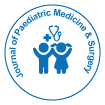Advancing Strategies to Tackle Preterm Labour
Received Date: Dec 02, 2024 / Published Date: Dec 30, 2024
Abstract
Preterm labour, defined as the onset of regular uterine contractions resulting in cervical changes before 37 weeks of gestation, remains a leading cause of neonatal morbidity and mortality worldwide. It accounts for significant healthcare burdens, given its association with complications such as respiratory distress syndrome, intraventricular hemorrhage, and long-term neurodevelopmental impairments in infants. Despite advancements in obstetric care, including better diagnostic tools and therapeutic interventions, the management and prevention of preterm labour pose significant challenges. The multifactorial etiology, encompassing genetic, environmental, and lifestyle factors, complicates the development of universal preventive measures. This article explores the epidemiology, risk factors, pathophysiology, diagnostic criteria, and management strategies for preterm labour. Special emphasis is placed on recent advances in therapeutic interventions, such as tocolytics, antenatal corticosteroids, and progesterone therapy, as well as the critical role of multidisciplinary approaches in improving neonatal outcomes and reducing global health disparities.
Citation: Oluwaseun A (2024) Advancing Strategies to Tackle Preterm Labour. J Paediatr Med Sur 8: 316.
Copyright: © 2024 Oluwaseun A. This is an open-access article distributed under the terms of the Creative Commons Attribution License, which permits unrestricted use, distribution, and reproduction in any medium, provided the original author and source are credited.
